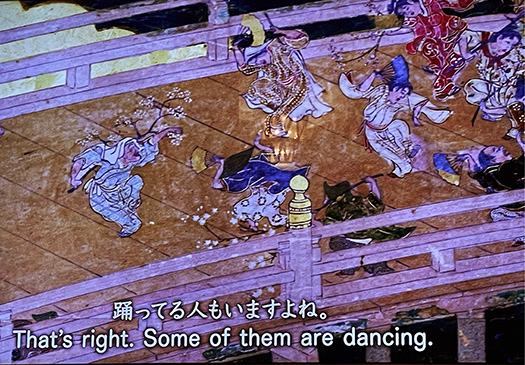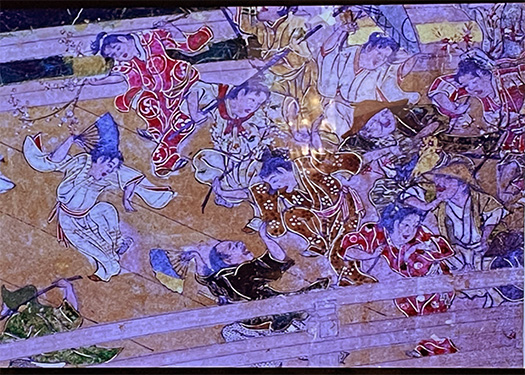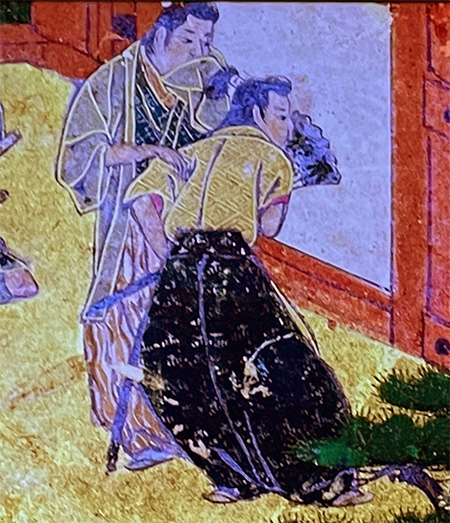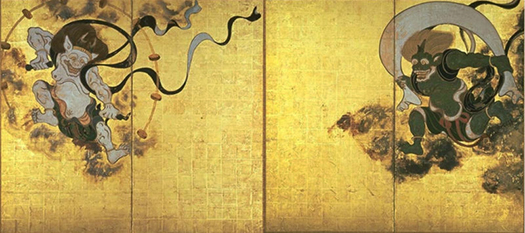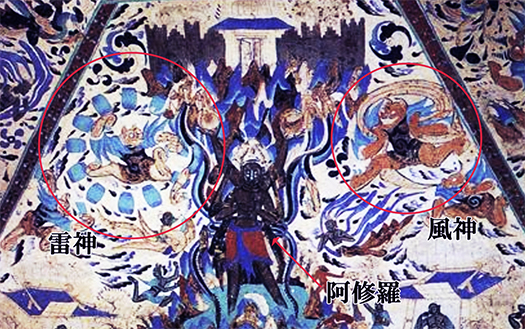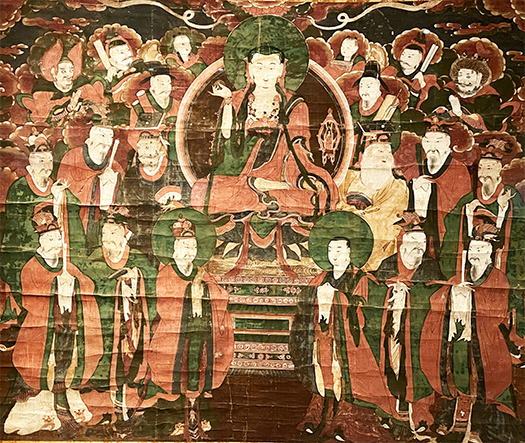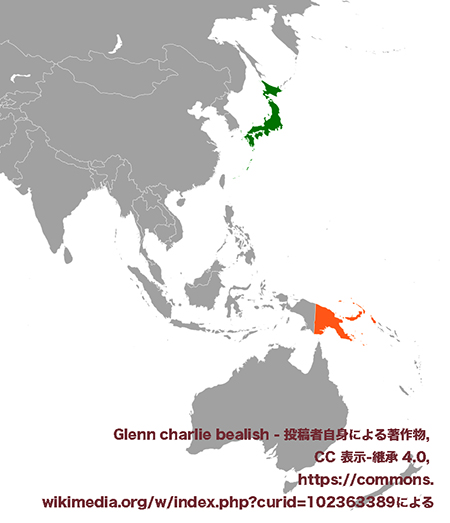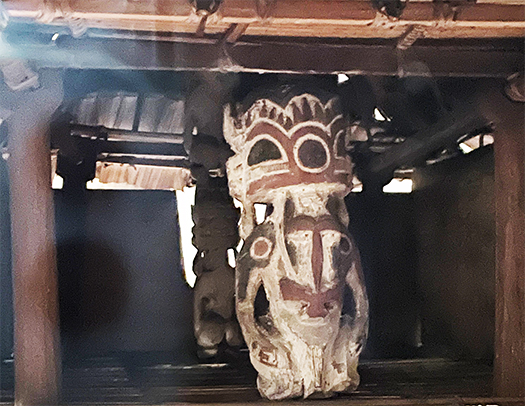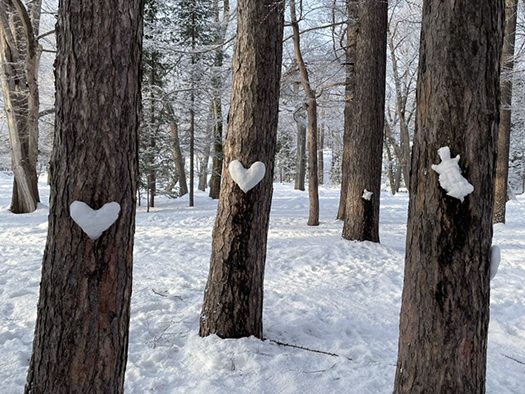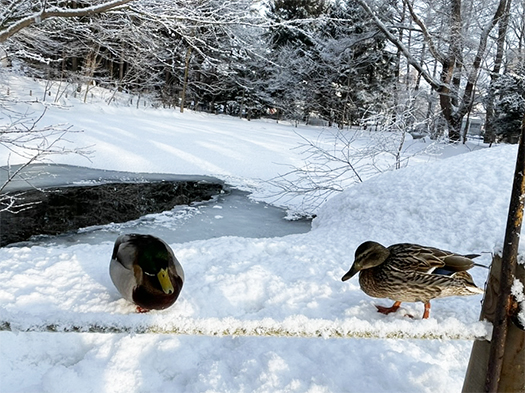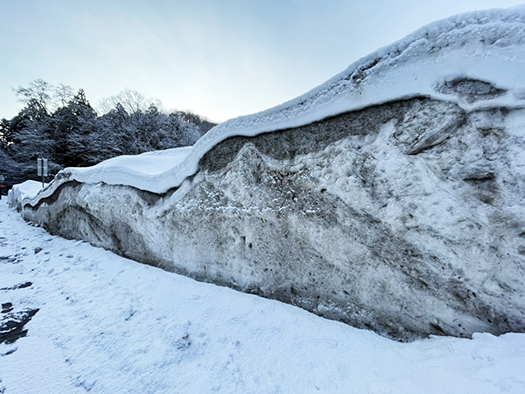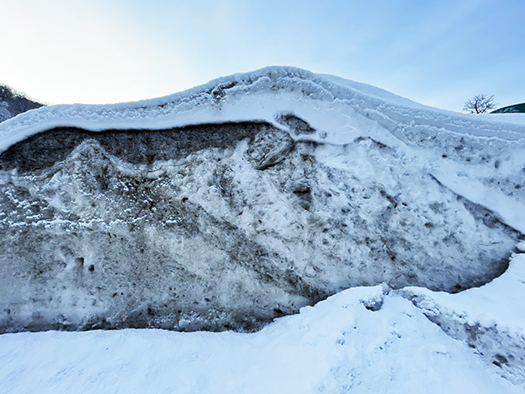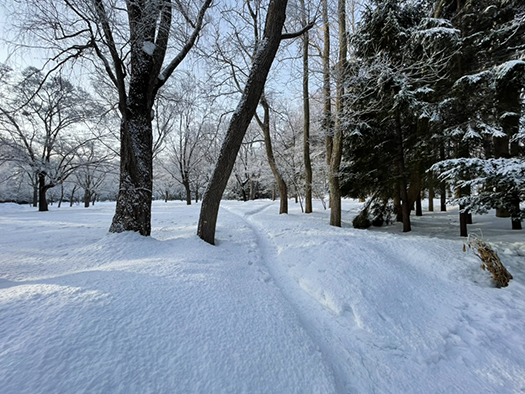
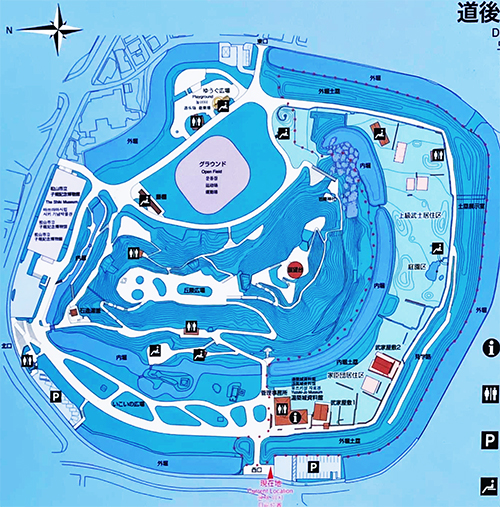
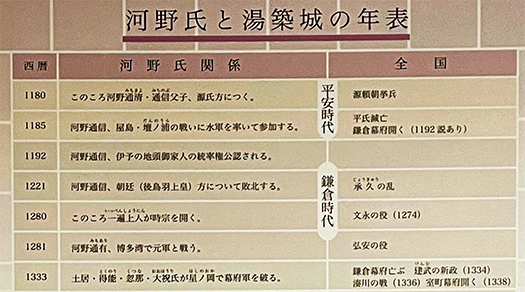
本日は正月の夫婦旅・松山歴史篇。わたしの家系伝承では、兵庫県姫路市の「英賀城」に存在した武家・三木家というのに縁を遡れるとされてきています。歴史上の話なのでそこからもさまざまな有為転変、家系の交錯が見られるのですが、播州のこの三木氏というのが一応の筋道になっている。
そういう「手掛かり」を受けてときどき関西・中国地域を巡る旅を重ねてきています。こういう導きがあるといろいろな出会いもあって、重層してきて面白さに深みが出てくるもの。
最近の冬休み旅では夫婦で四国を歩くことが定番化。カミさんが四国大好きになっているので、その機会にわたしの年来の希望であった「伊予・河野氏」のことを調べたかったのです。
というのは英賀三木氏というのは、伝承ではこちらの河野氏の一統だったとされているのです。伊予を初めとして四国に生きていた河野氏一族から分枝して、播州の瀬戸内海に面した姫路・英賀の河川と海運の重なる兵庫県の要衝地点に根拠地を構えたのが三木氏ということ。
そうすると四国という存在、それも伊予松山が非常に身近になってくるのですね。家系探索がさらに一歩古層化してきているとも言える。
河野氏というのはどうも源平期以前から伊予に蟠踞していた氏族の流れのようで、源平期・屋島合戦のときに船団を率いて義経の源氏軍に合力しその後壇ノ浦合戦にも参戦している。その「功」があって、鎌倉幕府体制では重く遇された。頼朝も参加した幕府のある宴席で、頼朝から数えて3番目の位置を与えられ、そのことが武士らしくチョーうれしくて家紋を「折敷三の字」にしたと言われる。折敷膳に掛けられていた布か紙に書かれた「三」の字が印象あざやかだったのでしょう。
わが家に遺っている漆器にもこの家紋が描かれているので、時空を超えてご先祖さまたちが伝承してきたことは疑いがない。また河野氏と三木氏の結縁性も物語っている。
そういった背景知識が頭にあって、この河野家の本拠の城塞「湯築城」を探訪してみた次第。カミさんは幸い、松山市内の「伊丹十三記念館」がゾッコン対象だったので、夫婦それぞれの単独お好み探訪ということで家庭的に平和裏に推移しておりました(笑)。
いまは公園として整備されている湯築城跡ですが、湯築城資料館や復元武家屋敷など興味深い施設も整備されている。わたしは湯築城資料館でいろいろ質問させていただいている内に「館長」さまが質問対応していただくことになり、非常に興味深いお話をうかがうことも出来ました。
館長のお話では英賀三木氏との関係性も十分に把握されていて、河野氏が1585年に滅亡した同時期に武将家としての三木氏も滅亡したことに偶然とは言い切れないものを感じられていたようです。
来年の正月休みになるか、それ以外になるか不明ですが、また再訪させていただいて血脈の探究をライフワークのひとつにしたいと思っています。
English version⬇
Iyo Matsuyama “Yuzuki Castle” and the Remnants of the Kono Clan
Kono clan joined forces with Yoshitsune’s army in the Battle of Yashima. A powerful clan in Iyo dating back to the Genpei period. Although the Kono clan was destroyed in the Warring States period, their fortress still remains in Matsuyama. This is the historical exploration part of the family tree. The family history
Today is the Matsuyama historical part of our New Year’s couple’s trip. According to my family tradition, I can trace my family history back to the Miki family, a warrior family that existed at Eiga Castle in Himeji City, Hyogo Prefecture. Since this is a historical story, various changes and crossings of family lines can be seen from there, but the Miki family of Banshu is a tentative source.
With these “clues” in mind, I have occasionally traveled to the Kansai and Chugoku regions. With this kind of guidance, there are various encounters, which add layers and depth to the fun.
On our recent winter vacation trip, walking around Shikoku as a couple has become a regular occurrence. Since my wife has become a fan of Shikoku, I wanted to take this opportunity to research the Iyo-Kono clan, which I have wanted to do for many years.
According to tradition, the Eiga Miki clan was a branch of the Kono clan. The Miki clan branched off from the Kono clan that lived in Iyo and other parts of Shikoku, and established a stronghold in Hyogo Prefecture at a strategic point where rivers and marine transport overlapped at Himeji and Eiga, facing the Seto Inland Sea in Banshu.
This makes the existence of Shikoku, and Iyo Matsuyama in particular, very familiar. It can be said that the search for the family lineage has become one step older.
The Kono clan seems to have been coiled in Iyo before the Genpei period, and during the Battle of Yashima in the Genpei period, they led a fleet of ships to join Yoshitsune’s Genji forces, and later participated in the Battle of Dannoura. Because of his “merits,” he was treated favorably by the Kamakura shogunate regime. At a banquet attended by Yoritomo, he was given the third position in the order of precedence, and it is said that he was so happy to receive this honor that he chose “Oriziki San-no-ji” as his family crest. The character for “three” written on the cloth or paper that hung over the oriziki table must have made a vivid impression.
Since the family crest is also depicted on lacquerware that has survived in my family, there is no doubt that it has been handed down through time and space by our ancestors. It also shows the connection between the Kono clan and the Miki clan.
With this background knowledge in mind, I decided to visit Yuzuki Castle, the stronghold of the Kono family. Fortunately, my wife had a crush on the “Juzo Itami Memorial Museum” in Matsuyama City, so our visit was a family-friendly and peaceful one, as each of us had our own personal preference (laugh).
The ruins of Yuzuki Castle are now maintained as a park, but there are also interesting facilities such as the Yuzuki Castle Museum and a restored samurai residence. While I was asking various questions at the Yuzuki Castle Museum, the “director” of the museum was kind enough to answer my questions, and I was able to hear some very interesting stories.
He seemed to have a good grasp of the relationship with the Eiga Miki clan and felt that it could not be a coincidence that the Miki clan as a military family also perished at the same time the Kono clan perished in 1585.
I am not sure if it will be during the New Year holidays next year or otherwise, but I would like to revisit the site and make the exploration of the bloodline one of my lifeworks.
Posted on 3月 27th, 2024 by 三木 奎吾
Filed under: 歴史探訪 | No Comments »



